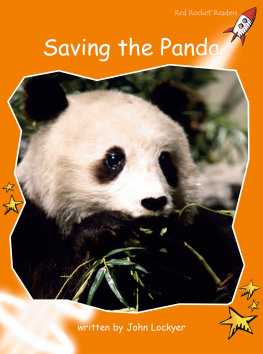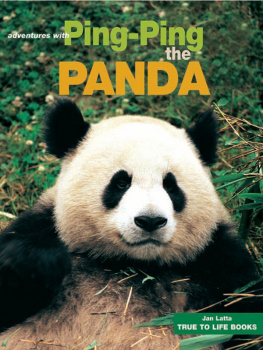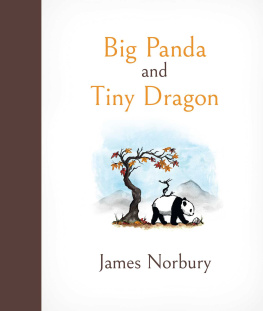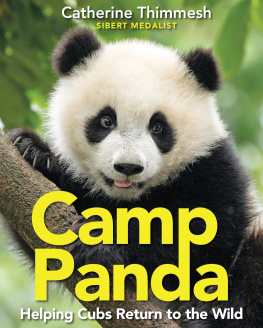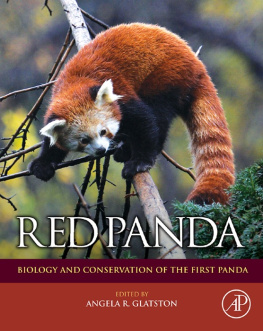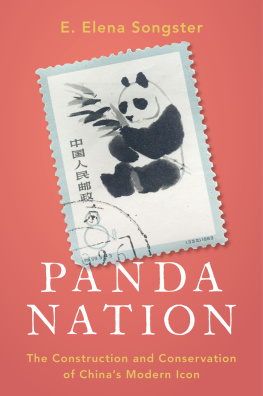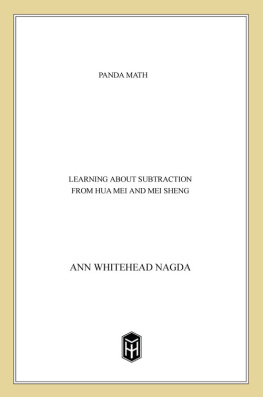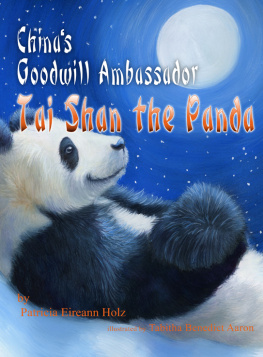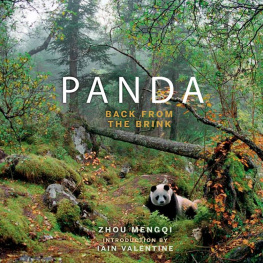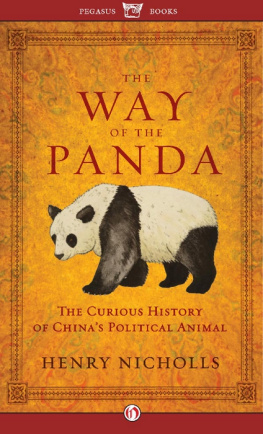Panda

A DAVID & CHARLES BOOK
Copyright David & Charles Limited 2008
David & Charles is an F+W Publications Inc. company
4700 East Galbraith Road
Cincinnati, OH 45236
First published in the UK in 2008
First published in the US in 2008
Text and illustrations copyright Heather Angel 2008
Heather Angel has asser ted her right to be identified as author of this work in accordance with the Copyright, Designs and Patents Act, 1988.
All rights reserved. No par t of this publication may be reproduced, stored in a retrieval system, or transmitted, in any form or by any means, electronic or mechanical, by photocopying, recording or otherwise, without prior permission in writing from the publisher.
A catalogue record for this book is available from the British Library.
ISBN-13: 978-0-7153-2852-1 hardback
ISBN-10: 0-7153-2852-2 hardback
Printed in Singapore by KHL for David & Charles Brunel House, Newton Abbot, Devon
Commissioning Editor: Neil Baber
Editor: Emily Pitcher
Desk Editor: Demelza Hookway
Senior Designer: Sarah Clark
Project Editor: Caroline Taggart
Production Controller: Beverley Richardson
Visit our website at www.davidandcharles.co.uk
David & Charles books are available from all good bookshops; alternatively you can contact our Orderline on 0870 9908222 or write to us at FREEPOST EX2 110, D&C Direct, Newton Abbot, TQ12 4ZZ (no stamp required UK only); US customers call 800-289-0963 and Canadian customers call 800-840-5220.

Panda
An intimate portrait of one of the worlds most elusive animals
Heather Angel


Contents
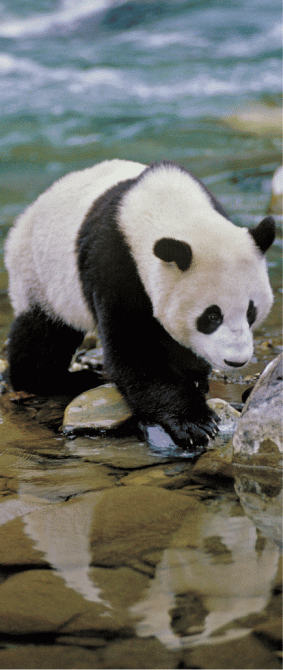
Introduction
The giant panda oozes charm and charisma and is loved the world over. Who could fail to be captivated by this uniquely endearing animal, with its large, friendly face and eyes that are exaggerated by black eye patches? Confined to China, it is far and away the countrys most famous animal. Not surprisingly, it is regarded as a national treasure, known as daxiong mao, meaning large cat bear. Yet it is now so rare that very few people have seen one in the wild.
The panda has achieved iconic status and in captivity it is frequently given a repetitive name as a mark of respect. Chi Chi who lived at London Zoo for 14 years in the 1960s and 1970s inspired the logo, designed by Peter Scott, for the newly formed World Wildlife Fund; and Jing Jing, born in Chengdu Research Base for Giant Panda Breeding on 30 August 2006, is the mascot for the 2008 Beijing Olympic Games.
Biologically, the panda is something of an anomaly; it has the dentition and gut of a carnivore, yet it is a vegetarian feeding almost exclusively on bamboo. We know from fossil remains that pandas once lived as far south as northern Vietnam and Myanmar and as far north as Beijing, but climate change and forest destruction pushed them northwards to the eastern edge of the Tibetan plateau in their quest for life-giving bamboo groves. Road construction further fragmented their forest home and today pandas are confined to a few mountain reserves in three provinces Sichuan, Shaanxi and Gansu.
In recent years, much time and money have been invested in panda conservation to help halt the decline in numbers. In 1998, a logging ban was enforced in all panda reserves, and some farmlands have been reforested. Fragmented reserves have been linked by the planting of bamboo corridors, which help pandas to find new food sources when all their favoured bamboo in an area dies off after simultaneous flowering. The corridors also serve to extend the gene pool, enabling the pandas to move further from their home territories and mate with unrelated individuals.
When the Third National Panda Survey was undertaken in 2004, more sophisticated survey methods resulted in an upwards revision of the estimated total wild population from 1,000 to 1,590 individuals. There are now 40 panda reserves, compared with only 13 two decades ago.
Early attempts to breed pandas in captivity were very hit and miss, but now the success rate is high, with more cubs being born each year and the total number of captive pandas exceeding 180. Sadly, however, the first attempt to introduce a captive-bred panda into the wild was short-lived. A five-year-old male named Xiang Xiang was released from the China Conservation and Research Center for the Giant Panda at Wolong in April 2006, having been trained for almost three years in all the necessary skills needed to survive in the wild, and fitted with a radio collar to enable conservationists to track his movements. Less than a year later, his body was found on the snow. From the extensive damage to one side of the body, it is thought that he may have fallen from some height after a fight with another male panda.


Researchers will build on this experience, and the project to release captive-bred pandas into the wild will continue. Pandas will be given better survival training and next time a female may be selected in preference to a male. Another possibility is that several animals could be set free in an area that once had a natural panda population.
Although the giant panda is instantly recognizable, a book on pandas would be incomplete without devoting a chapter to its lesser-known red cousin. Despite its name, this appealing animal is more closely related to the raccoon, but shares some of the giant pandas bear-like characteristics and habits.
The images in this book have been selected from literally thousands taken during seven trips to China over a period of 13 years, specifically to photograph pandas in different seasons. Perhaps the most memorable trip was when I climbed, together with my guide, porter and cook, to the huts where Dr George Schaller, the distinguished American zoologist, worked with other scientists, researching pandas 2,530 metres (8,300 feet) up at Wuyipeng. As I rounded the last corner I saw daggerlike icicles hanging from the roofs. There was no heating in my hut and the bedding was damp. I slept with all my clothes on, but this meant I had a speedy rise at first light to see the forest blanketed with fresh snow. As I walked along the narrow tracks I heard the haunting call of a tragopan pheasant. It was an unforgettable moment.
Why do I keep returning to photograph the panda? Quite simply because it is my favourite animal. I hope that Panda will give others an insight into why it has become a flagship species in the world of conservation. Let us trust that it is not too late to save this very special animal for life on earth would be the poorer without it.





